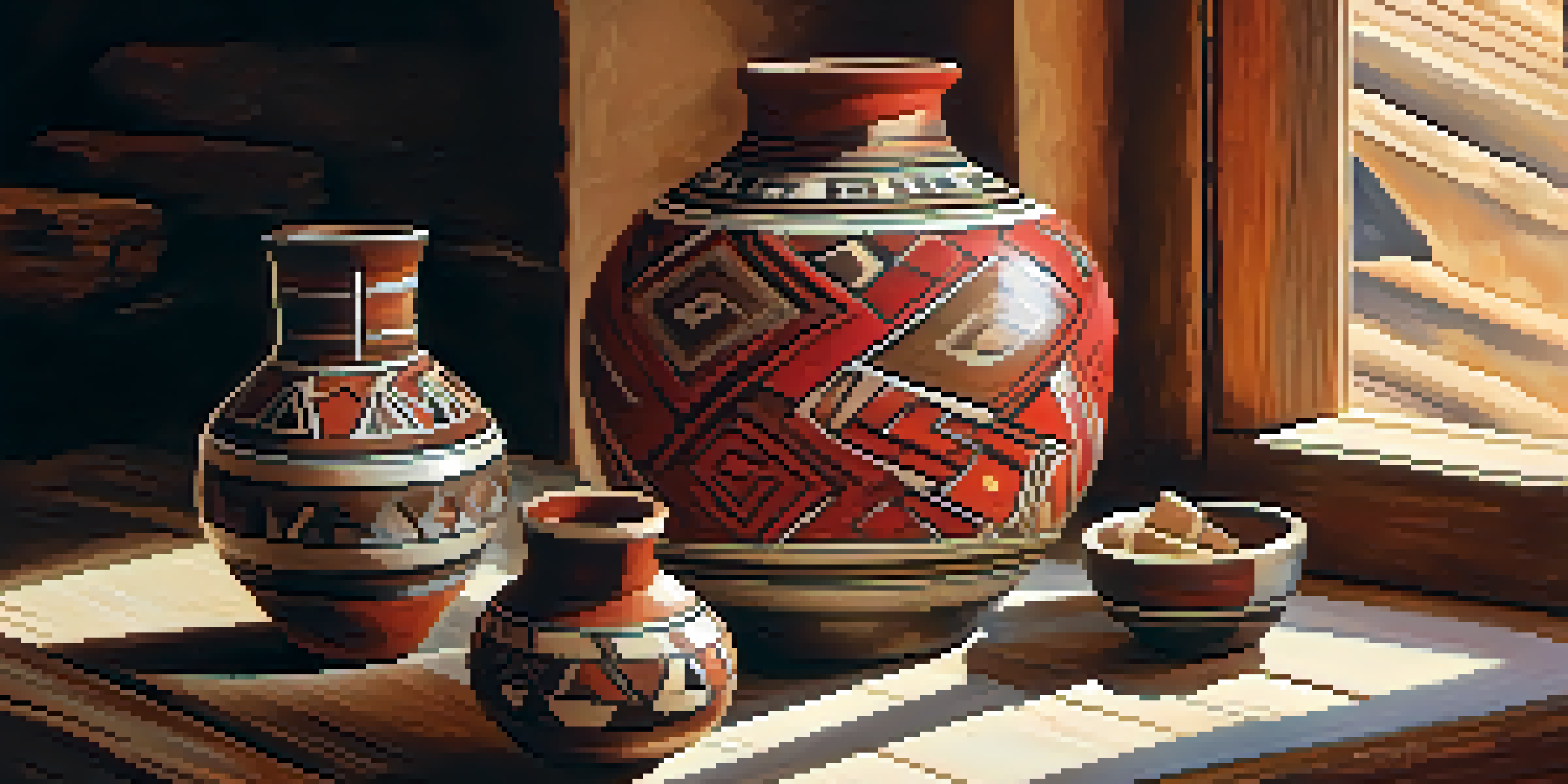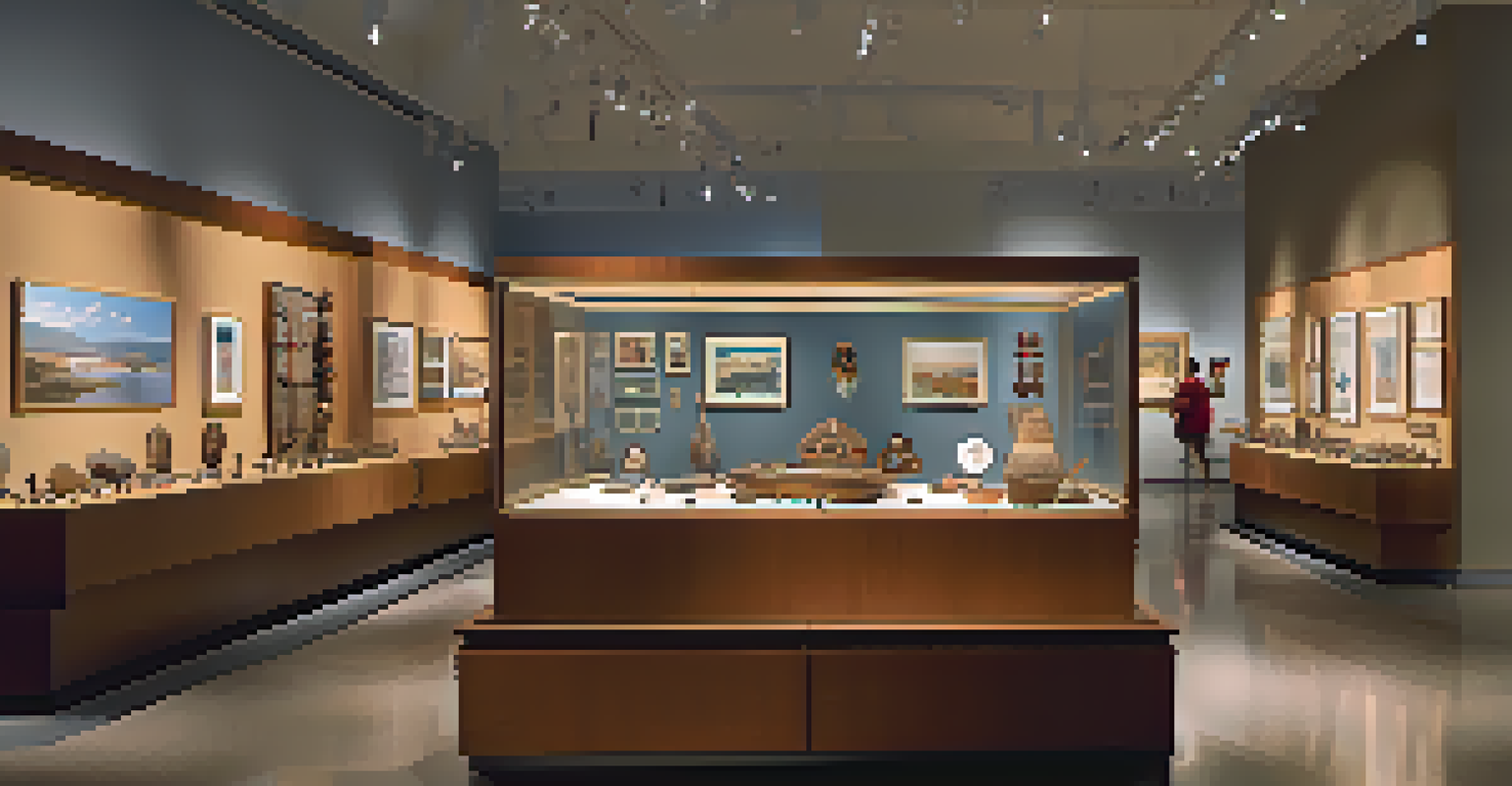Preservation Efforts for Arizona's Native American Artifacts

Understanding the Importance of Native American Artifacts
Native American artifacts are not just objects; they tell the stories of cultures, traditions, and histories that span thousands of years. From pottery and tools to jewelry and textiles, each piece offers insights into the lives of Indigenous peoples in Arizona. These artifacts serve as a bridge connecting us to our past, reminding us of the rich cultural heritage that has shaped our present.
The past is never dead. It's not even past.
In Arizona, tribes like the Navajo, Hopi, and Apache have been custodians of these treasures, and their preservation is crucial for cultural continuity. However, these artifacts face numerous threats, including environmental decay, looting, and urban development. Understanding their significance is the first step toward ensuring these pieces of history are protected for future generations.
Moreover, preserving these artifacts goes beyond just safeguarding objects; it involves respecting the cultures they represent. Engaging with Native communities in preservation efforts fosters a sense of ownership and respect, ultimately enriching the preservation process.
Current Challenges in Artifact Preservation
Despite the importance of preserving Native American artifacts, various challenges impede these efforts. Climate change, for instance, poses a significant threat, as rising temperatures and extreme weather conditions can lead to the deterioration of materials. The effects of erosion and natural disasters can also damage sites where these artifacts are found, making preservation a race against time.

Another issue is the illegal trade of artifacts, which removes them from their cultural context and can lead to a loss of heritage. This black market not only exploits the artifacts but also disrespects the communities from which they originated. Addressing this issue requires collaboration between law enforcement and Native communities to protect these invaluable pieces of history.
Preserving Cultural Heritage Together
Collaboration with Native communities is essential for effectively preserving Native American artifacts and respecting their cultural significance.
Additionally, the lack of funding for preservation projects hampers many initiatives aimed at protecting these artifacts. Many organizations struggle to secure the necessary resources to conduct proper excavations, restorations, and educational programs. Without financial support, the future of these artifacts remains uncertain.
Collaborative Efforts with Native Communities
Collaboration is key when it comes to preserving Native American artifacts. Many preservation efforts are now involving Native communities in decision-making processes, ensuring that they have a voice in how their heritage is protected. This partnership not only empowers Indigenous peoples but also enriches the preservation process with their unique knowledge and perspectives.
Artifacts are the remnants of our history, and they tell us about who we were, who we are, and who we might become.
One successful example of collaboration is the work done by the Heard Museum in Phoenix. By partnering with Native artists and historians, the museum creates exhibitions that authentically represent Indigenous cultures and their artifacts. This approach not only honors the past but also educates the public about the ongoing relevance of these cultures.
Moreover, these collaborative efforts often include educational programs that raise awareness about the importance of preservation. By engaging younger generations, communities can instill a sense of pride and responsibility towards their heritage, ensuring that these artifacts are valued and respected for years to come.
Technological Innovations in Artifact Preservation
Advancements in technology are playing a significant role in the preservation of Native American artifacts. Techniques like 3D scanning and digital archiving allow for the documentation of artifacts in their current state, providing a digital record that can be used for research and education. This technology not only helps in preserving the artifacts but also makes them more accessible to the public.
Additionally, virtual reality (VR) and augmented reality (AR) technologies are being used to create immersive experiences that allow people to explore Native American cultures without physically handling artifacts. This innovative approach can engage a wider audience, fostering appreciation and respect for these items while keeping them safe from potential damage.
Technology Enhances Preservation Efforts
Innovative technologies like 3D scanning and virtual reality are vital in documenting and protecting Native American artifacts while making them more accessible.
Furthermore, conservationists are using advanced materials and techniques to restore and protect artifacts from environmental factors. By employing climate-controlled storage and specialized cleaning methods, experts can prolong the lifespan of these precious items, ensuring they remain intact for future generations to study and enjoy.
Education and Awareness Campaigns
Education is crucial in fostering respect and understanding for Native American artifacts. Various organizations and museums are running awareness campaigns to inform the public about the significance of these artifacts and the importance of their preservation. Through workshops, lectures, and interactive exhibits, they engage with communities, helping to create a culture of conservation.
One successful initiative is the 'Protect Our Heritage' campaign, which aims to educate visitors about the cultural significance of Native artifacts and the threats they face. By sharing stories and historical context, these initiatives encourage people to appreciate the value of Indigenous heritage and take part in preservation efforts.
Moreover, incorporating Native voices into educational programs enhances the learning experience. When Indigenous peoples share their knowledge and experiences, it fosters a deeper understanding of their cultures and the importance of protecting their heritage. This mutual respect is essential in the ongoing dialogue about artifact preservation.
Legislative Measures for Artifact Protection
Legislation plays a critical role in protecting Native American artifacts from looting and illegal sales. Laws such as the Native American Graves Protection and Repatriation Act (NAGPRA) aim to ensure that artifacts are returned to their rightful owners and that their burial sites are respected. These legal frameworks are essential for safeguarding Indigenous cultural heritage.
However, enforcing these laws can be challenging. Many artifacts are still found in private collections or displayed in museums without proper provenance, making it difficult to trace their origins. Advocacy for stronger enforcement of existing laws and the creation of new regulations is vital for enhancing protection efforts.
Legislation Supports Artifact Protection
Strong legal frameworks, such as NAGPRA, are crucial for safeguarding Native American artifacts from looting and ensuring they are returned to their rightful owners.
Furthermore, raising awareness among lawmakers about the significance of these artifacts can lead to more robust legislative support. By fostering partnerships between Native communities and legislators, we can create a united front advocating for the preservation of Indigenous cultural heritage.
The Role of Museums in Artifact Preservation
Museums play a pivotal role in the preservation of Native American artifacts, serving as custodians of cultural heritage. Many museums have developed policies and practices aimed at ensuring the ethical care of these items. By involving Native communities in their curation processes, they help ensure that the representation of Indigenous cultures is accurate and respectful.
Exhibitions dedicated to Native American artifacts can educate the public about their significance while promoting awareness of preservation efforts. Museums often host events and programs that encourage visitors to engage with these artifacts, fostering a deeper appreciation for the cultures they represent.

Additionally, museums are increasingly utilizing technology to enhance their preservation efforts. From digital cataloging to interactive displays, they are more equipped than ever to protect and celebrate Native American artifacts while making them accessible to a broader audience.